The National Defence Academy (NDA) is a prestigious institution that serves as the training ground for future officers in the Indian Armed Forces. Aspirants seeking to join the ranks of the Army, Navy, or Air Force through the NDA exam must navigate the challenging selection process that encompasses a written examination, SSB interview, and medical examination. A comprehensive understanding of the NDA syllabus is of utmost importance to prepare effectively for this rigorous journey. In this article, we explore the key subjects, relevant statistics, and diverse perspectives related to the NDA syllabus, shedding light on the path to excellence and valor.
SYLLABUS FOR NDA EXAMINATION – PAPER I: MATHEMATICS (Maximum Marks: 300).
Mathematics is a crucial component of the NDA syllabus, accounting for approximately 50% of the written examination. Candidates are assessed on their proficiency in areas such as algebra, trigonometry, arithmetic, geometry, and statistics. A solid foundation in these subjects is essential for success in the exam.
Topics Covered:
ALGEBRA:
Concept of sets.
Operations on sets.
Venn diagrams.
De Morgan’s laws.
Cartesian product.
Relations.
Equivalence relations.
Real Numbers: Representation of real numbers on a line, Complex numbers (basic properties, modulus, argument, cube roots of unity).
Binary System: Conversion of decimal numbers to binary system and vice versa.
Progressions: Arithmetic, geometric, and harmonic progressions.
Equations and Inequalities: Quadratic equations with real coefficients, Solution of linear inequalities of two variables using graphs.
Combinatorics: Permutation and combination, Binomial theorem and its applications.
Logarithms: Logarithms and their applications.
Questions will test the candidate’s algebraic manipulation skills.
MATRICES AND DETERMINANTS:
- Types of matrices
- Operations on matrices
- Determinant of a matrix and its basic properties
- Adjoint and inverse of a square matrix
- Applications:
Solution of a system of linear equations with two or three unknowns using Cramer’s rule
Solution of a system of linear equations with two or three unknowns using the matrix method.
TRIGONOMETRY:
- Angles and their measures in degrees and radians
- Trigonometric ratios
- Trigonometric identities
- Sum and difference formulae
- Multiple and sub-multiple angles
- Inverse trigonometric functions
- Applications: height and distance, properties of triangles
ANALYTICAL GEOMETRY OF TWO AND THREE-DIMENSIONS:
- Rectangular Cartesian Coordinate system
- Distance formula
- Equations of lines in various forms
- The angle between two lines
- Distance of a point from a line
- Equations of a circle in standard and general form
- Standard forms of parabola, ellipse, and hyperbola
- Eccentricity and axis of a conic
- Points in three-dimensional space and the distance between them
- Direction cosines and direction ratios
- Equations of a plane and a line in various forms
- The angle between two lines and the angle between two planes
- Equation of a sphere
DIFFERENTIAL CALCULUS:
- Concept of a real-valued function: domain, range, and graph
- Composite functions, one-to-one, onto, and inverse functions
- The notion of limit and standard limits with examples
- Continuity of functions with examples and algebraic operations on continuous functions
- Derivative of a function at a point and its geometrical and physical interpretation, including applications
- Derivatives of sum, product, and quotient of functions, derivative of a function with respect to another function, and derivative of a composite function
- Second-order derivatives
- Increasing and decreasing functions
- Application of derivatives in problems of maxima and minima
INTEGRAL CALCULUS AND DIFFERENTIAL EQUATIONS:
- Integration as the inverse of differentiation, integration by substitution, and by parts
- Standard integrals involving algebraic expressions, trigonometric, exponential, and hyperbolic functions
- Evaluation of definite integrals and determination of areas of plane regions bounded by curves with applications
- Definition of order and degree of a differential equation, formation of a differential equation by examples
- General and particular solutions of a differential equation, solution of first-order and first-degree differential equations of various types with examples
- Application in problems of growth and decay
VECTOR ALGEBRA:
- Vectors in two and three dimensions: magnitude and direction
- Unit and null vectors
- Addition and scalar multiplication of vectors
- Scalar product or dot product of two vectors
- Vector product or cross product of two vectors
- Applications: work done by a force, moment of a force, and geometrical problems
STATISTICS AND PROBABILITY:
- Classification of data and frequency distribution with examples
- Graphical representation using histograms, pie charts, and frequency polygons with examples
- Measures of central tendency: mean, median, and mode
- Calculation and comparison of variance and standard deviation
- Concepts of correlation and regression
PROBABILITY:
- Random experiments and their outcomes in a sample space
- Events: mutually exclusive, exhaustive, impossible, and certain events
- Union and intersection of events
- Complementary, elementary, and composite events
- Definition of probability: classical and statistical approaches with examples
- Elementary theorems on probability and simple problems
- Conditional probability and Bayes’ theorem with simple problems
- Random variable as a function on a sample space
- Binomial distribution and examples of random experiments producing binomial distribution
SYLLABUS FOR NDA EXAMINATION – PAPER II: ( GAT) GENERAL ABILITY TEST ( maximum marks-600).

The General Ability Test comprises two major sections: English and General Knowledge. The English section evaluates candidates’ language proficiency, including grammar, vocabulary, comprehension, and logical reasoning skills. The General Knowledge section spans diverse subjects like history, geography, current affairs, science, and politics. A well-rounded understanding of these topics is pivotal to performing strongly in this segment.
English Syllabus.
The English section of the NDA exam aims to assess the candidate’s proficiency in the English language. It covers various aspects like grammar, vocabulary, comprehension, and cohesion in extended text.
Grammar and Usage:
This part evaluates the candidate’s knowledge of basic grammar rules and ability to use English correctly. Questions may be based on topics like tenses, clauses, subject-verb agreement, articles, prepositions, etc.
Vocabulary:
The exam tests the range of vocabulary known to the candidates. Questions assess familiarity with synonyms, antonyms, idioms, phrases, and ability to understand meaning from context. A good vocabulary is essential to score well.
Comprehension:
Passages, poems, or prose extracts are provided to test reading comprehension skills. Questions are based on understanding the main idea, interpreting meaning, literary devices, and summary.
Cohesion in Extended Text:
Candidates may be asked to identify errors, fill in the blanks, improve sentences, or rearrange parts of a paragraph. The aim is to test cohesion and coherence in writing.
The English section carries 200 marks. Strong command over grammar, vocabulary, and comprehension skills is required to maximize scores. Regular reading helps build proficiency in the language.
General Knowledge Syllabus.

The General Knowledge section for NDA covers a wide range of topics including Physics, Chemistry, General Science, History, Geography, Current Affairs, and events.
Section A (Physics) covers the following topics:
- Physical Properties and States of Matter
- Mass, Weight, Volume, Density, and Specific Gravity
- Principle of Archimedes
- Pressure Barometer
- Motion of objects, Velocity, and Acceleration
- Newton’s Laws of Motion, Force, and Momentum
- Parallelogram of Forces, Stability, and Equilibrium of bodies
- Gravitation, Elementary ideas of work, Power, and Energy
- Effects of Heat, Measurement of Temperature and Heat, Change of State and Latent Heat, Modes of transference of Heat
- Sound waves and their properties, Simple musical instruments
- Rectilinear propagation of Light, Reflection, and refraction
- Spherical Mirrors and Lenses, the Human Eye
- Natural and Artificial Magnets, Properties of a Magnet, Earth as a Magnet
- Static and Current Electricity, Conductors and Nonconductors, Ohm’s Law, Simple Electrical Circuits, Heating, Lighting and Magnetic effects of Current, Measurement of Electrical Power, Primary and Secondary Cells, Use of X-rays
- General Principles in the working of Simple Pendulums, Simple Pulleys, Siphon, Levers, Balloon, Pumps, Hydrometer, Pressure Cooker, Thermos Flask, Gramophone, Telegraphs, Telephone, Periscopes, Telescopes, Microscopes, Mariner’s Compass, Lightning Conductors, Safety Fuses.
Section B (Chemistry) covers the following topics:
- Physical and Chemical changes
- Elements, Mixtures, and Compounds
- Symbols, Formulae, and simple Chemical Equations
- Law of Chemical Combination (excluding problems)
- Properties of Air and Water
- Preparation and Properties of Hydrogen, Oxygen, Nitrogen, and carbon dioxide
- Oxidation and Reduction
- Acids, Bases, and Salts
- Carbon (different forms)
- Fertilizers (Natural and Artificial)
- Materials used in the preparation of substances like Soap, Glass, Ink, Paper, Cement, Paints, Safety Matches, and Gunpowder
- Elementary ideas about the structure of Atom
- Atomic Equivalent and Molecular Weights
- Valency
Section C (General Science) covers the following topics:
- Difference between the living and non-living
- Basis of Life: Cells, Protoplasm, and Tissues
- Growth and Reproduction in Plants and Animals
- Elementary knowledge of the Human Body and its important organs
- Common Epidemics: Causes and Prevention
- Food: Source of Energy for humans, Constituents of food, Balanced Diet
- The Solar System: Meteors and Comets, Eclipses
- Achievements of Eminent Scientists
Section D (History, Freedom Movement, etc.) covers the following topics:
- A broad survey of Indian History, with emphasis on Culture and Civilization
- Freedom Movement in India
- Elementary Study of Indian Constitution and Administration
- Elementary knowledge of Five Year Plans of India
- Panchayati Raj, Co-operatives, and Community Development
- Bhoodan, Sarvodaya, National Integration, and Welfare State
- Basic Teachings of Mahatma Gandhi
- Forces shaping the modern world: Renaissance, Exploration and Discovery, War of American Independence, French Revolution, Industrial Revolution, and Russian Revolution
- Impact of Science and Technology on Society
- Concept of One World, United Nations, Panchsheel, Democracy, Socialism, and Communism
- Role of India in the present world.
Section E (Geography) covers the following topics:
- The Earth, its shape, and size
- Latitudes and Longitudes, Concept of time
- International Date Line
- Movements of Earth and their effects
- Origin of Earth
- Rocks and their classification
- Weathering (Mechanical and Chemical)
- Earthquakes and Volcanoes
- Ocean Currents and Tides
- The atmosphere and its composition
- Temperature and Atmospheric Pressure
- Planetary Winds, Cyclones, and Anti-cyclones
- Humidity, Condensation, and Precipitation
- Types of Climate
- Major Natural Regions of the World
- Regional Geography of India: Climate, Natural vegetation
- Mineral and Power resources
- Location and distribution of agricultural and industrial activities
- Important Sea ports and main sea, land, and air routes of India
- Main items of Import and Export of India
Current Affairs:
Questions on current affairs evaluate awareness levels of recent national and international events and happenings. Candidates are expected to be up-to-date on news related to politics, sports, the economy, science, etc.
SYLLABUS FOR SSB INTERVIEW.

The SSB (Services Selection Board) interview process is considered one of the toughest selection processes and evaluates the candidates on various aspects to determine their suitability to join the armed forces. The process consists of two stages:
Stage I:
This includes the Officer Intelligence Rating (OIR) tests and the Picture Perception and Description Test (PPDT). Based on the combined performance in these tests, candidates are shortlisted for the next stage.
Stage II:
This stage spans over 4 days and involves Psychology Tests, Group Testing Officer Tasks, Interviews, and conferences.
Psychology Tests:
These are conducted by a Psychologist and aim to assess the candidate’s personality including their responses to different situations. Tests include the Word Association Test, Situation Reaction Test, Self Description Test and Thematic Apperception Test.
Group Testing Officer (GTO) Tasks:
These are conducted in small groups and aim to gauge the candidate’s qualities like teamwork, decision-making, planning, and coordination. Tasks include Group Discussion, Group Planning Exercise, Progressive Group Task, Individual Obstacles, Half Group Task, Lecturette and Group Obstacle Race.
Interview:
The Interviewing Officer (IO) aims to assess the candidate’s personality, presence of mind, communication skills, leadership qualities, and knowledge during a personal interview.
Conference:
This is the final stage where the assessing officers collectively arrive at a final assessment of the candidate based on their performance across all tests and award marks.
The entire process aims to reveal the presence or absence of Officer-Like Qualities (OLQs). Based on the final assessment, candidates are recommended or not recommended to join the Indian Armed Forces.
EXAM PATTERN.
The NDA exam pattern consists of two written papers followed by the SSB interview rounds for shortlisted candidates. The key details of the written exam format are:
The NDA exam has two compulsory written papers – Mathematics and General Ability Test
Each paper is 2.5 hours in duration
Paper I has a maximum of 300 marks, while Paper II has a maximum of 600 marks.
Paper-I tests mathematical abilities and is objective type with multiple choice questions
Paper II evaluates English and General Knowledge skills and is an objective format with multiple-choice questions
Both papers are held on the same day according to the official exam schedule
The total marks obtained in Paper-I and Paper-II determine the candidate’s merit rank
Based on the merit list, candidates are called for SSB interview
The SSB tests candidates’ personality, leadership skills, and mental-physical fitness over 4-5 days
Final selection depends on the combined performance in the written exam and SSB interview stage
So in summary, the NDA exam pattern consists of two objective papers testing maths, English, and general knowledge followed by an extensive personality assessment of shortlisted candidates via the SSB. The final merit list accounts for marks obtained in the written test and SSB.
DIVERSE PERSPECTIVES ON THE NDA SYLLABUS.
Academic Experts:
Academic experts highlight the importance of a balanced preparation strategy for the NDA syllabus, with equal focus on mathematics and the General Ability Test. They emphasize the significance of clarity, logical reasoning, and time management to excel in the examination.
Former NDA Cadets:
Former NDA cadets provide invaluable insights into the examination experience and the relevance of the syllabus. They stress the necessity of thoroughly understanding fundamental concepts, practicing sample papers, and staying updated with current affairs to perform well in the exam and subsequent selection processes like the SSB interview.
KEY DATES.
The important dates for the NDA 1 2024 exam are as follows:
Notification Release: 20th December 2023.
Application Start Date: 20th December 2023.
Application End Date: 9th January 2024.
Admit Card Available: 4th week of March 2024.
NDA Exam Date: 21st April 2024.
Result Declaration: 1st week of May 2024.
ELIGIBILITY CRITERIA:

To be eligible for NDA 1 2024, candidates must satisfy the following criteria:
Age Limit:
Candidates who are eligible must be both unmarried and born between July 2, 2005, and July 1, 2008, with consideration for both males and females.
The accepted date of birth is the one mentioned in the Matriculation or Secondary School Leaving Certificate or a certificate recognized by an Indian University as equivalent. Other documents like horoscopes, affidavits, birth extracts, or service records will not be accepted. The term “Matriculation/Secondary School Examination Certificate” includes the alternative certificates mentioned in these instructions.
Nationality:
To be eligible for the NDA exam, the candidate must be unmarried and fall into one of these categories:
- A citizen of India.
- A subject of Nepal.
- A person of Indian origin who moved from Pakistan, Burma, Sri Lanka, Kenya, Uganda, Tanzania, Zambia, Malawi, Zaire, Ethiopia, or Vietnam with the intention of settling in India permanently.
Candidates falling under categories 2 and 3 need a certificate of eligibility from the Government of India, with the exception of Gorkha subjects from Nepal.
Marital Status:
Only unmarried male & female candidates are eligible to apply for the NDA exam.
Physical Standards:
Candidates must be physically fit according to physical standards for admission to the NDA Examination as per the latest notification issued by UPSC.
CONCLUSION:
The NDA syllabus is a compass for aspirants seeking a career in the Indian Armed Forces. A meticulous understanding of key subjects, relevant statistics, and diverse perspectives empowers candidates to navigate this challenging path successfully. By embracing a disciplined study routine, utilizing available resources, and seeking guidance from experts, aspirants can enhance their chances of excelling in the NDA examination and embarking on a remarkable journey of excellence and valor.
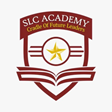
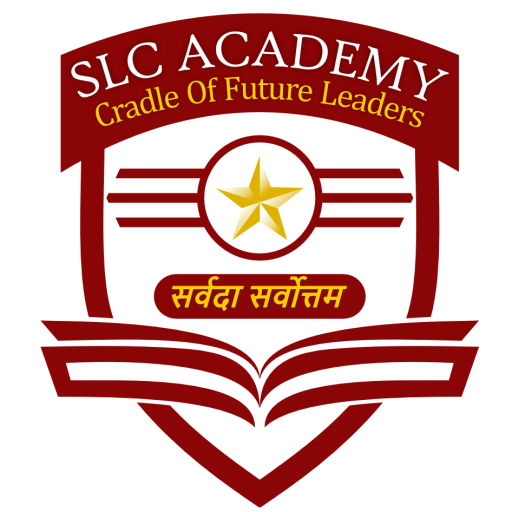
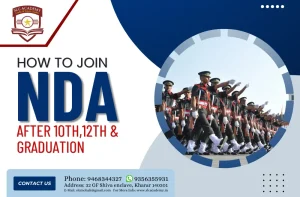
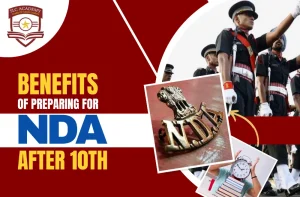


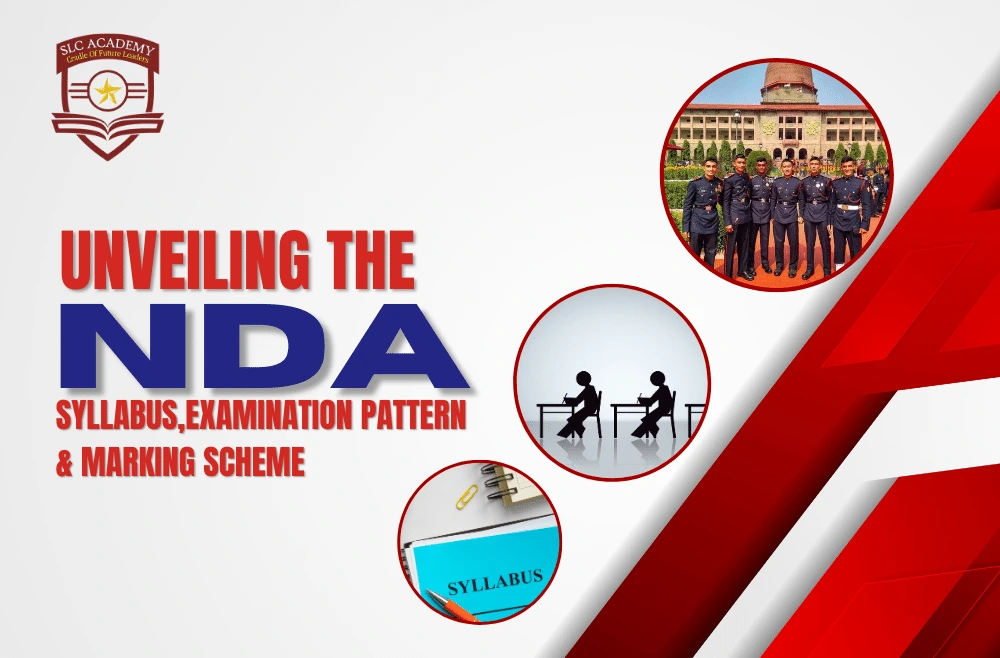
One Response